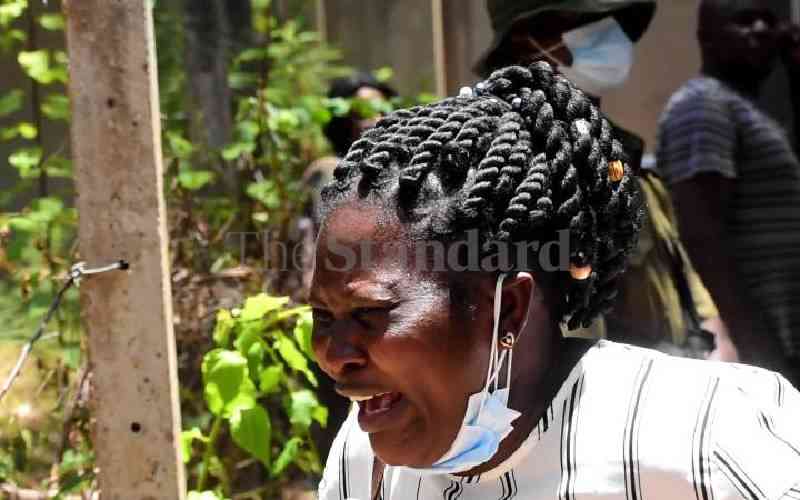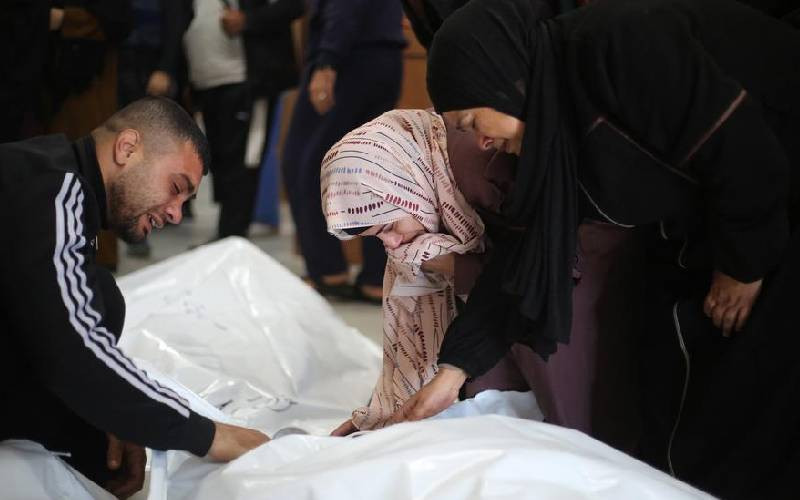By Michael Chepkwony
Death, according to many African societies is the last phase of an elaborate celebration of the life cycle. Death is widely regarded as a rite of passage that prepares the spirit of the deceased to journey on to the next realm.
Among the Kalenjin community, death per se does not actually exist. The two extremes — life and death — are united according to Kalenjin communities.
Ninety two-year-old Kireger Arap Kisorion, a resource person at Gotab Gaa (centre of traditional knowledge) at Mosoriot in Nandi County explains that death is merely a transition to another world. The dead, he says, have a permit to visit the world of the living during special occasions.
According to Mr Kisorion the dead live underground where their movements are felt through tremors and earthquakes locally termed as girgirenet.
“A tremor is a movement felt when ancestors are moving. They are assumed to be migrating to another place but we cannot explain the motive behind their movements,” he says.
The explanation further goes on to say cases of severe earthquakes are due to anger of the ancestors.
“Our forefathers explained that when they have been offended by the living, like in cases of immorality they fight back through earthquakes, which may become destructive,” Kisorion says.
Mr Kisorion says that if one does not feel the tremor, it is interpreted that his ancestors were not among those who were moving. The ancestors need to be remembered at all times. The living, do this by pouring libations.
“In the past, everyone had to appease the ancestors by pouring some food on the ground before starting to eat. They came first into this world before us and they should be fed first,” says Elizabeth Koibei, 69-year-old from Kisabei village in Bomet County.
Mysterious diseases
She says traditions have changed for worse and this has angered the ancestors. “The Church and the Western culture have misled people. Our children no longer have respect for traditions. No wonder misfortunes follow us at every corner,” she says.
Ms Koibei says the soil does not support good yields and animals die of mysterious diseases.
She says, “Our children who went to school tell us it is such and such disease but we know it is all lies. It means we have gone astray and our ancestors are avenging by sending strange diseases to mock us.”
Ms Koibei expects more tragedies since even ‘memory naming’ has been forgotten.
Stay informed. Subscribe to our newsletter
“When someone dies and a child is born from the extended family, he is supposed to be named after him/her. This is a way of making sure the dead are not forgotten,” she says.
She says the church has interfered with such naming warning of dire consequences for the family.
“I know of a family who did not give the child an ancestral name. The child fell ill and doctors could not find any problem. It was only until an old woman called the child by the name of a relative who had died that the child became well again,” she recalls.
In rare cases, the dead person arrives at a home and comes face to face with a family member. This happens especially when conflict emerges in the bereaved family over property.
“Some stepmothers have spoken of beatings from their dead husbands whenever they mistreat their step children,” says Ms Koibei.
Selecting a name
However, the Kalenjin community detests bachelors and spinsters and when they die no child is supposed to be named after them. As Ms Koibei explains, the society condemns them for not contributing to further procreation.
“Even a child or a young person who has died is not remembered because he did not sire any child,” She says.
When there is a dispute on the name to be given to newborn, the elders call out all names until the child sneezes. The name that brought out the sneeze is said to be the right one.
“You would then hear elderly person saying Kenduiywo or Chepkutaor any other has been reborn,” she explains.
When someone succumbs to death, relatives make a quick move to keep the body where tradition requires. Among the Kipsigis, a bachelor or spinster’s body cannot be allowed to spend a night at home. It is kept at the mortuary until the day of burial when the body arrives and is buried directly.
“Kipsongoiyat (the unmarried) is not allowed to spend a night at a family house and not even his own. He must be buried upon arrival,” says Andrew Tigirer, a resident of Bomet County.
However, Nandi community has a different approach. Whether married or not the dead is subjected to similar ritual. They are kept at a house for a night before it is laid to rest the following day.
“We do not treat them (the unmarried) differently. They are all equal and must be respected. If not the family risks losing more people,” says Kirorei Arap Maritim, a 78-year old, another resource person at Gotab Gaa in Nandi County.
When a married man dies, a supporting stone (goitab maa) at the fireplace in the kitchen is removed for a day before it is replaced preferably with the same stone. Similarly, the other stone is also removed when the mother of the home dies. The third stone is not removed because it symbolises children and death does not befall them at once in ordinary sense.
“A stone at the right side at the cooking place symbolises the father and the mother. Each stone is removed depending on who dies first. Nowadays some homes do not do that because of change of culture,” Kipyego Arap Silgich at Gotab Gaa in Nandi says.
He also explains that when the father of a home dies, kimonjok (the wooden pointer at the tip of the hut) is cut so that the society can know that the head of the family is no more.
“Nowadays, however, it is rare to do this because many homes have iron sheets for roof,” he says.
 The Standard Group Plc is a
multi-media organization with investments in media platforms spanning newspaper
print operations, television, radio broadcasting, digital and online services. The
Standard Group is recognized as a leading multi-media house in Kenya with a key
influence in matters of national and international interest.
The Standard Group Plc is a
multi-media organization with investments in media platforms spanning newspaper
print operations, television, radio broadcasting, digital and online services. The
Standard Group is recognized as a leading multi-media house in Kenya with a key
influence in matters of national and international interest.
 The Standard Group Plc is a
multi-media organization with investments in media platforms spanning newspaper
print operations, television, radio broadcasting, digital and online services. The
Standard Group is recognized as a leading multi-media house in Kenya with a key
influence in matters of national and international interest.
The Standard Group Plc is a
multi-media organization with investments in media platforms spanning newspaper
print operations, television, radio broadcasting, digital and online services. The
Standard Group is recognized as a leading multi-media house in Kenya with a key
influence in matters of national and international interest.








